What are the Features of Inner Mongolia Cuisine?
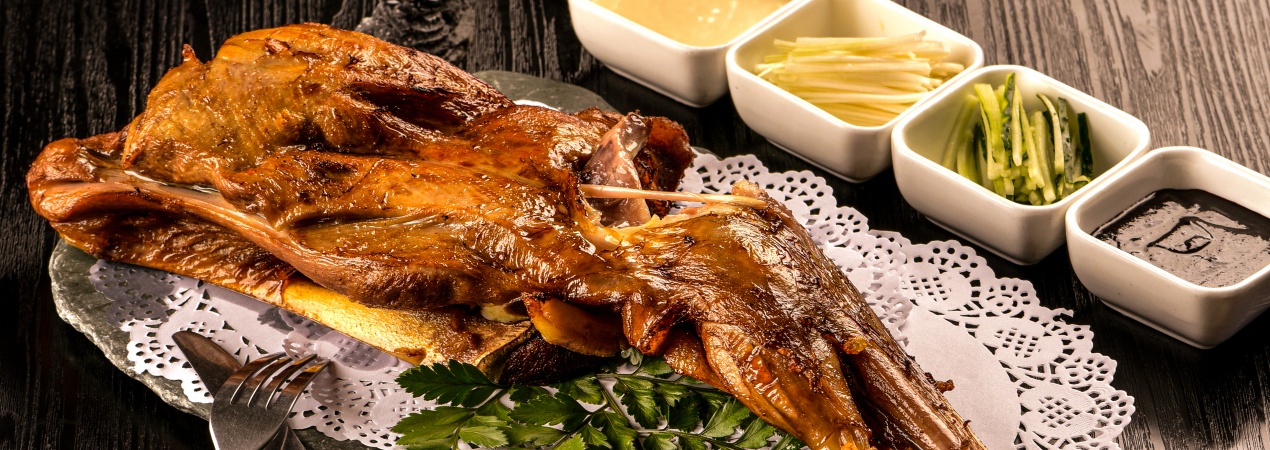
The vast grasslands, galloping horses, and bold herders – Inner Mongolia not only boasts magnificent natural scenery but also nurtures a unique and appealing food culture. Its cuisines, infused with the roughness and passion of nomadic peoples, carry the gifts of the grasslands and the traditional wisdom of the Mongolian people in every bite. This article will take you into the world of Inner Mongolia's delicacies, exploring seven unmissable grassland flavors and letting you experience the boldness and rich aroma on your taste buds.
Dietary Characteristics of Inner Mongolia
Inner Mongolian cuisine is a culinary epitome of the grassland and nomadic culture, and understanding its characteristics serves as a unique window to comprehend Mongolian culture.
Dietary Classification
Mongolians traditionally split their diet into three types: red food (meat), white food (dairy), and brown food (grains). Red food has things like hand-held mutton and roasted lamb ribs; white food includes milk tea and milk tofu; brown food has fried rice and pasta. Long ago, when people moved like "Zou Xikou" (going west to Hetao Plain) and "Chuang Guandong" (going northeast), farming and nomadic diets mixed a lot. In Hetao Plain, a "grains + meat and dairy" way of eating started—Han people's oat noodles and steamed buns are often eaten with Mongolians' milk tea and hand-held mutton.
The eastern part took in Northeast China's eating habits, so rice, sour cabbage and stewed dishes are common there. The western part, influenced by Shanxi and Shaanxi, likes pasta and savory tastes more. This mix also shows in new dishes, such as beef stewed in milk tea and mutton braised in yogurt—they have the best parts of different food cultures.
Differences in Geographical Diet
People call Inner Mongolia the "Storehouse of Meat, Tank of Milk, and Granary." Here, how good ingredients are depends a lot on the local geography. For red foods, Xilingol Ujimqin lamb and Hulunbuir beef are the most famous. Grassland lambs eat natural foods like sand onions and chives, so their meat is tender, tasty, and not gamey.
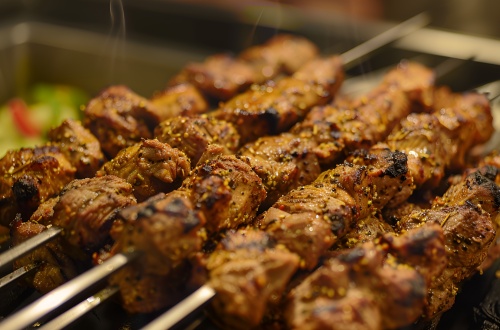 Mongolian Mutton
Mongolian Mutton
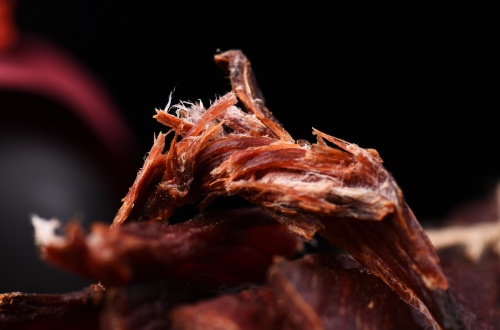 Mongolian Dried Beef
Mongolian Dried Beef
White foods come from places like Zheng Lan Banner—it's called the "Hometown of Chinese Chagan Yide Culture" (Chagan Yide means dairy products in Mongolian). A full industrial chain for white foods has existed for a long time, from fresh milk to fermented things like milk tofu, milk skin, and sour mare's milk.
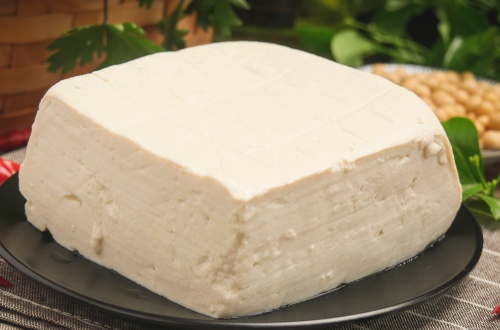 Milk Toufu
Milk Toufu
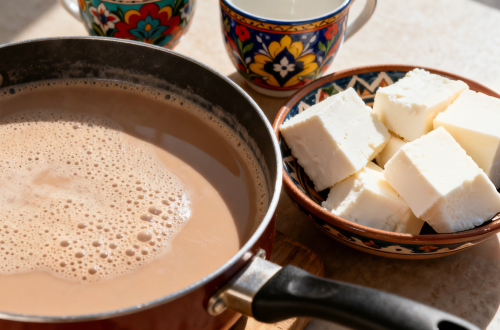 Mongolian Milk Tea and Cheese
Mongolian Milk Tea and Cheese
Brown foods include good wheat from the Hetao Plain and roasted rice (which keeps well) from the western deserts. Also, the eastern forest areas have lots of natural ingredients, such as wild vegetables and fruits. There are big differences in local products between eastern and western Inner Mongolia, too: the wet east has much game meat, fish, and coarse grains, while the dry west mainly has camel meat, camel milk, and crops that can stand drought.
Cooking Methods
Cooking in Inner Mongolia focuses on "preserving the original flavor of ingredients" and mainly uses simple methods like boiling, roasting, stewing and hot pot. For example, hand-held mutton is boiled only with clear water, green onions and ginger; copper-pot mutton hot pot uses clear soup as the base. Both ways bring out the natural aroma of meat and dairy to the fullest. Meanwhile, fermentation techniques, passed down for a thousand years, are a distinct feature of its food culture. Sour mare's milk needs complex fermentation—"stirred a thousand times a day". It was called "Yuanyu Jiang" (a rare imperial dish) in the Yuan Dynasty, and helps digestion and strengthens the body. Milk tofu is made through boiling yogurt, separating whey and shaping with molds. The square milk tofu from Zheng Lan Banner even carries on the cooking techniques of imperial cuisine.
These techniques not only meet the storage needs of nomadic life, but also give food unique flavor and nutrition.
Top 7 Recommended Inner Mongolia Foods
Inner Mongolian cuisine is a crystallization of the grassland's gifts and nomadic wisdom, with each dish holding a unique regional flavor. The following 7 unmissable Mongolian delicacies will take you to experience the rich customs and culinary charm of this land in a vivid way.
Roast Whole Lamb
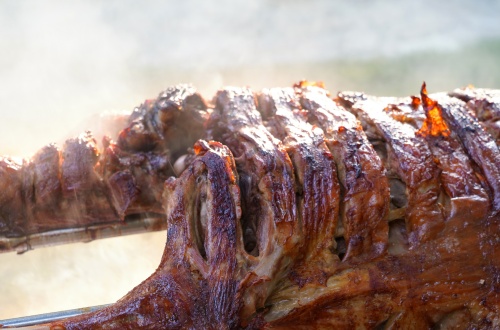 Roast Whole Lamb
Roast Whole LambChoose a castrated lamb raised on the grassland. Stuff its belly with spices like citron leaves, then roast it slowly over charcoal for 4 to 5 hours until it turns golden and shiny. Its outer skin is crispy, while the inner meat is tender and juicy. Eat it with cumin and chili powder, or wrap it in lettuce. It has no gamey taste and gets more flavorful as you chew—an iconic, ceremonial dish for festive gatherings.
Hand-Held Mutton
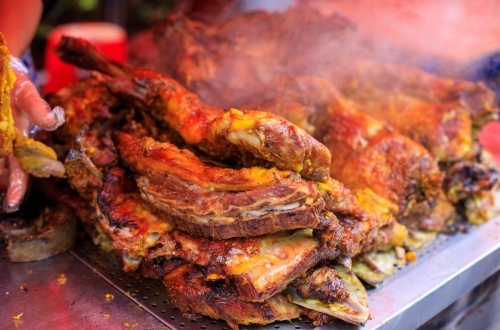 Hand-Held Mutton
Hand-Held MuttonLamb from Xilingol or Hulunbuir is boiled in clear water until 70% to 80% done—only green onions and ginger are used to boost flavor. It's tender, with both milky and meaty smells mixed together. You cut it with a knife, dip it in salt, and eat it at once. This way keeps its original taste as much as possible. It shows the bold nomadic food culture directly, and goes really well with salty milk tea to take away greasiness.
Hot Pot Mutton
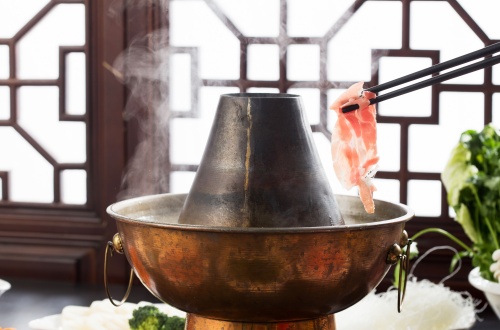 Hot Pot Mutton
Hot Pot MuttonThe key to this dish is "clear water in a copper pot + thinly sliced lamb". The lamb cooks instantly once put into the pot. The dipping sauces blend flavors from northern and southern China—local chive flowers and Sichuan-style sesame oil are both popular. For a more advanced way, add milk tofu to the soup base; it lets the milky aroma seep into the lamb. It warms you up in autumn and winter, and the lamb's quality is always reliable.
Braised Beef Tendon
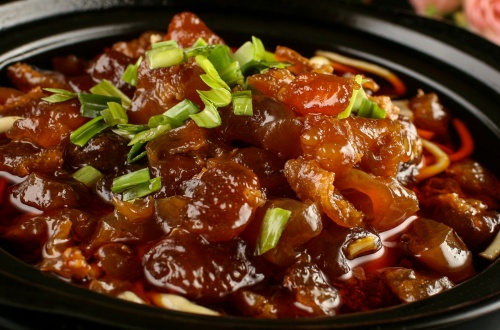 Braised Beef Tendon
Braised Beef TendonFresh beef tendons are cut into sections and blanched first. Sauté them with green onions to bring out the smell, then pour in chicken soup and simmer slowly. Use starch to thicken the sauce. The final dish looks shiny red, with tender and chewy texture. It's full of flavor and nutrients—a classic dish for welcome banquets. The more you chew, the more delicious it gets.
Braised Chicken with Yellow Mushrooms
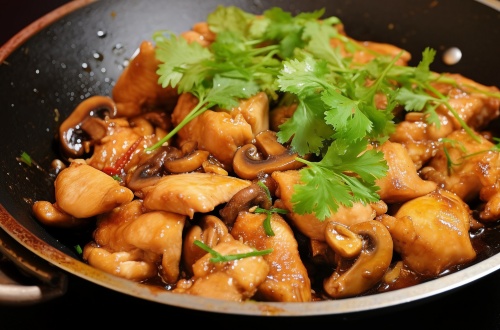 Braised Chicken with Yellow Mushrooms
Braised Chicken with Yellow MushroomsUse wild "royal mushrooms" from the grassland and free-range chicken. After blanching both, simmer them slowly with green onions and ginger. The yellow mushrooms soak up the chicken soup, tasting smooth and tender. The chicken is firm but not tough, and the soup is clear, fresh and fragrant. With no extra seasonings, it fully shows the original flavor of the ingredients—an excellent tonic dish for autumn and winter.
Stir-Fried Shacong(Mongolian Chives) with Eggs
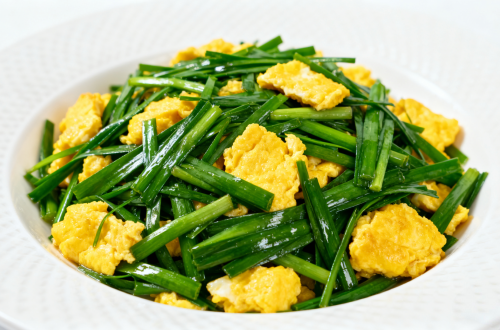 Stir-Fried Shacong with Eggs
Stir-Fried Shacong with EggsTake shacong, cut it into sections, mix well with beaten eggs, then stir-fry them together. The shacong is crisp, tender and slightly spicy, which balances the richness of the eggs. It tastes fresh and refreshing, with natural flavor and nutrition. It's simple to make—a quick home-style dish that shows the unique ingredients of the grassland.
Milk Tofu
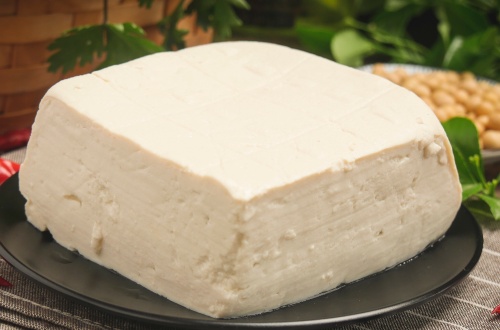 Milk Tofu
Milk TofuMilk tofu is made by fermenting and curdling milk. It has two flavors: sweet and salty. Traditionally, you just chew it directly, and it tastes rich and milky. For modern ways, people have created roasted milk tofu and milk tofu cakes—some are crispy outside but soft inside, others are crunchy and sweet. You can eat it as a tea snack or with mare's milk wine. That's why it's a "versatile star" among dairy products.
Drop us a line and we'll connect you with the top China expert in no time!